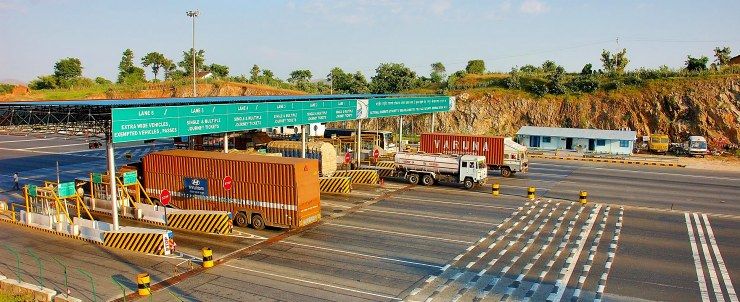Minister Nitin Gadkari Announces Yearly Fastag Pass: Just Rs. 3000 For 200 Trips!


The Ministry of Road Transport and Highways Minister Nitin Gadkari has just made a big announcement that will fundamentally alter how toll collection works for frequent highway users. In a recent announcement, Union Minister Nitin Gadkari revealed that the government will roll out the annual pass scheme that would allow private car owners to pay a flat yearly fee of ₹3,000 for 200 trips across India's vast network of national highways. Effectively, it means, every time you cross a toll gate, you'll pay only Rs. 15 per crossing, for 200 crossings.
This move will be implemented from 15th August 2025, and could dramatically reduce travel costs for daily and long-distance commuters while also simplifying the toll system that often frustrates drivers due to inconsistencies, delays and pricing confusion. But the larger impact may lie in how this plan ties into the Centre’s vision for a more tech-driven, efficient highway ecosystem.

Currently, Fastag has significantly improved the tolling process, cutting down long queues and enabling seamless payments. However, for frequent travellers, the costs still add up. Imagine a daily inter-city commuter or a professional who regularly drives long distances. Depending on routes and toll densities, monthly toll expenses could easily exceed ₹2,000 to ₹3,000. An annual flat fee of ₹3,000 might be a game-changer for them, bringing predictability and affordability into the picture.
This proposal appears to be targeted primarily at private car users. Commercial vehicles, which form a major chunk of toll revenue, are unlikely to be included. In this respect, the policy neatly separates frequent but non-commercial users from heavy-load revenue contributors, maintaining a balance between user convenience and financial sustainability.

While some may view the ₹3,000 annual toll pass as a revenue compromise, the government’s intention seems to be broader. It’s about increasing road usage and compliance, while removing barriers that push people towards alternative, less regulated routes. More vehicles on tolled expressways means more uniform wear and less pressure on local, often poorly maintained roads.
There is also a strong alignment with India’s larger infrastructure ambition. The country has seen a rapid expansion of expressways and multi-lane highways over the past decade, many of which are under-utilised outside of major freight routes. Offering an affordable toll solution could drive higher private usage of these high-speed corridors, showcasing their utility beyond commercial logistics.
While the idea sounds promising on paper, implementing it without unintended side effects will be crucial. The Fastag system, although a marked improvement over manual tolling, still suffers from occasional glitches, double deductions, and technical misreads. If the annual pass is tied to Fastag but lacks strict back-end safeguards, it could open the door to misuse.
Moreover, pricing it at ₹3,000 assumes a break-even or slight revenue loss per user compared to their current toll payments. But what about those who rarely travel? Will there be an opt-out system, or will it be mandatory for all private vehicle users? The clarity on this point will be key to avoid penalising those who only use highways occasionally.
There is also the matter of differential tolling. Some roads are run by private concessionaires under PPP models. Their agreements are often based on per-use toll revenue, and a universal annual pass might require renegotiation or government subsidies to compensate them. Without aligning all stakeholders, the plan risks getting delayed in red tape.

If it takes off, the Fastag-based annual pass could serve as a foundation for more subscription-based travel services. Think bundled highway travel, integrated with EV charging credits or insurance discounts. As India moves towards digitised transport ecosystems, such schemes could evolve into broader mobility wallets, especially with UPI and digital IDs enabling real-time verification and payment adjustments.
For now, the ₹3,000 pass offers a hopeful sign that the government is serious about reducing everyday friction on Indian roads. Whether it leads to better compliance or simply offers relief to frequent travellers, the success of this scheme will rest not just on the price point, but on how smartly it is executed. The idea is bold. Making it work will need even bolder systems behind it.